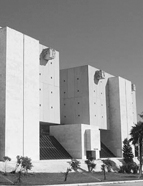

................................
By a decree dated January 6, 1796, a Chair of Diplomatics was established at the University of Coimbra, under the direction of Professor João Pedro Ribeiro, to promote the study, reading, and transcription of documents. The need to equip this Chair with the necessary technical resources led to its relocation to the Torre do Tombo in 1801. Attendance was made mandatory for those seeking to be admitted as clerks or officials in the Royal Archive ( Idem , pp. 45-46).
The gradual appointment of qualified personnel allowed for significant progress in organising the collection and creating access tools, such as directories, indexes, and inventories. After a period of neglect during the period of Philippine rule , a renewed focus on the archive emerged, with reforms led by Jorge da Cunha and Manuel Jácome Bravo, appointed guarda-mor in 1632. Increased importance was reflected in decrees regulating accessibility and the incorporation of documents during the reigns of King João IV ( Idem , pp. 37-38) and King Pedro II. However, it was with the appointment of the engineer Manuel da Maia as Guarda-Mor on February 12, 1745, that the reform initiated in the 17th century was further developed. Unfortunately, the work that had been gradually taking shape suffered a severe setback with the 1755 earthquake, which prompted the relocation of the archive to the Monastery of São Bento and required significant efforts to reconstruct the documentary collection and reorganise the service.
In the height of the Enlightenment, illuminist ideas significantly influenced the criteria used to restructure the archive. The original arrangement of documents and archival series was lost following the collapse of the “Torre do Tombo,” and amidst the rubble, the records were left in a state of complete disarray. Unfortunately, the reconstruction of the collections did not attempt to restore their original order but instead followed the “fashionable” practices of the period—methodical classifications based on intellectual frameworks rather than their organic origins. As a result, “artificial collections” of documents were created, organised chronologically, disregarding the importance of their provenance. The Corpo Cronológico , a collection comprising 525 bundles with 82,902 documents originally belonging to the royal official Pêro de Alcáçova Carneiro, serves as a striking example of a classification method that ignored the natural order of production. Other examples include the collections Bullarium and Cartas Missivas , where different types of documents, such as royal orders, petitions, mandates, and miscellaneous notes, were grouped together without regard for their original context.
This work is financed by national funds through FCT - Foundation for Science and Technology, I.P, in the scope of the projects UIDB/04311/2020 and UIDP/04311/2020.
